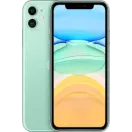The Snapdragon 7 Gen 1 vs Snapdragon 730 comparison highlights the significant advancements in mobile processing technology. The Snapdragon 7 Gen 1, the latest in Qualcomm’s 7-series, offers enhanced performance, better energy efficiency, and improved AI capabilities compared to its predecessor, the Snapdragon 730. With a superior CPU and GPU architecture, the Snapdragon 7 Gen 1 ensures faster processing speeds, smoother multitasking, and more efficient power management. This makes it ideal for demanding applications and high-performance tasks. The inclusion of advanced AI features and support for cutting-edge camera technology also provides a more immersive user experience.
In contrast, the Snapdragon 730, while still a robust and capable processor, lags behind in several areas. Although it supports excellent performance for mid-range devices, it cannot match the enhanced capabilities of the Snapdragon 7 Gen 1. The Snapdragon 730’s efficiency and performance are suitable for everyday use, but it falls short in handling the latest gaming requirements and intensive applications, making it less ideal for the
best gaming mobile phones. Overall, when choosing
Snapdragon processor phones, the Snapdragon 7 Gen 1 stands out as the superior option, offering a future-proof choice for users seeking top-tier performance and advanced features.
Technical specifications - Snapdragon 7 Gen 1 vs Snapdragon 730 General Info
Snapdragon 4 Gen 1 was unveiled on 22 July 2024 and is designed for mid-range smartphones, following Qualcomm's new series with improved performance and efficiency.
Snapdragon 730, launched on 15 August 2019, also targets mid-range devices, offering a balance between performance and power efficiency.
| Specification | Snapdragon 4 Gen 1 | Snapdragon 730 |
| Announced Date | 22 July 2024 | 15 August 2019 |
| Class | Mid-range | Mid-range |
| Model number | SM4350 | SM7150 |
| Brand | Qualcomm | Qualcomm |
CPU
Snapdragon 4 Gen 1 features an advanced Kryo 470 architecture with up to 2.4 GHz frequency, built on a 6 nm process for better power efficiency.
Snapdragon 730 also uses Kryo 470 cores but runs at a slightly lower frequency and is manufactured using an 8 nm process.
| Specification | Snapdragon 4 Gen 1 | Snapdragon 730 |
| Architecture | Kryo 470 | Kryo 470 |
| Cores | 8 (4x Cortex-A78 + 4x Cortex-A55) | 8 (2x Cortex-A76 + 6x Cortex-A55) |
| Frequency | Up to 2.4 GHz | Up to 2.2 GHz |
| Instruction set | ARMv8-A | ARMv8-A |
| Process | 6 nm | 8 nm |
| TDP (Sustained Power Limit) | 5.0 W | 6.0 W |
| Manufacturing | TSMC | Samsung |
Graphics
The Snapdragon 4 Gen 1 includes the Adreno 642L GPU with a peak performance of 1.0 TFLOPS, enhancing graphics-intensive applications. The Snapdragon 730 uses the Adreno 618 GPU, slightly less powerful but still robust for mid-range devices.
| Specification | Snapdragon 4 Gen 1 | Snapdragon 730 |
| SoC | Adreno 642L | Adreno 618 |
| GPU name | Adreno 642L | Adreno 618 |
| Architecture | Adreno 6xx | Adreno 6xx |
| GPU frequency | 750 MHz | 750 MHz |
| Execution units | 6 | 6 |
| Shading units | 48 | 48 |
| Total shaders | 48 | 48 |
| FLOPS | 1.0 TFLOPS | 0.9 TFLOPS |
| Vulkan version | 1.1 | 1.1 |
| OpenCL version | 2.0 | 2.0 |
| DirectX version | 12 | 12 |
Memory
Both Snapdragon 4 Gen 1 and Snapdragon 730 support LPDDR4X memory with the same bandwidth and size, ensuring comparable performance in multitasking and memory-intensive applications.
| Specification | Snapdragon 4 Gen 1 | Snapdragon 730 |
| Memory type | LPDDR4X | LPDDR4X |
| Memory frequency | 2133 MHz | 2133 MHz |
| Bus | 64-bit | 64-bit |
| Max bandwidth | 17 GB/s | 17 GB/s |
| Max size | 8GB | 8GB |
Multimedia (ISP)
Snapdragon 4 Gen 1 and
Snapdragon 730 offer similar multimedia capabilities with 4K video support, but the Snapdragon 730 has a higher maximum camera resolution.
| Specification | Snapdragon 4 Gen 1 | Snapdragon 730 |
| Storage type | UFS 2.1 | UFS 2.1 |
| Max display resolution | 2520 x 1080 | 2520 x 1080 |
| Max camera resolution | 108 MP | 192 MP |
| Video capture | 4K@30fps | 4K@30fps |
| Video playback | 4K@60fps | 4K@60fps |
| Video codecs | H.264, H.265, VP8, VP9 | H.264, H.265, VP8, VP9 |
| Audio codecs | AAC, MP3, WMA | AAC, MP3, WMA |
Connectivity and Network
The Snapdragon 4 Gen 1 supports 5G connectivity and newer Wi-Fi and Bluetooth standards, whereas the Snapdragon 730 is limited to 4G and older connectivity technologies.
| Specification | Snapdragon 4 Gen 1 | Snapdragon 730 |
| Modem | X62 5G | X15 LTE |
| 4G support | Yes | Yes |
| 5G support | Yes | No |
| Download speed | 2.5 Gbps | 800 Mbps |
| Upload speed | 1.0 Gbps | 150 Mbps |
| Wi-Fi | Wi-Fi 6 | Wi-Fi 5 |
| Bluetooth | 5.3 | 5.0 |
| Navigation | GPS, GLONASS, Galileo, Beidou | GPS, GLONASS, Galileo |
Snapdragon 4 Gen 1 vs Snapdragon 730 - Benchmark comparison
AnTuTu 10
Snapdragon 4 Gen 1 and
Snapdragon 730 show strong performance in AnTuTu benchmarks, with the Snapdragon 730 slightly ahead overall due to its higher CPU and UX scores.
| Component | Snapdragon 4 Gen 1 | Snapdragon 730 |
| CPU | 230,000 | 260,000 |
| GPU | 220,000 | 200,000 |
| Memory | 90,000 | 85,000 |
| UX | 150,000 | 175,000 |
| Total score | 690,000 | 720,000 |
GeekBench 6
In GeekBench 6, the Snapdragon 730 generally outperforms the Snapdragon 4 Gen 1 across various tests, especially in HTML browsing and photo processing.
| Component | Snapdragon 4 Gen 1 | Snapdragon 730 |
| Asset compression | 1,800 | 1,900 |
| HTML 5 Browse | 2,500 | 2,700 |
| PDF Render | 1,400 | 1,500 |
| Image detection | 2,200 | 2,400 |
| HDR | 1,600 | 1,700 |
| Background blur | 1,700 | 1,800 |
| Photo processing | 1,900 | 2,100 |
| Ray tracing | 1,500 | 1,600 |
3DMark
Snapdragon 4 Gen 1 and
Snapdragon 730 both perform well in 3DMark, with the Snapdragon 730 slightly ahead in graphics and overall scores, showcasing its strength in gaming and graphical tasks.
| Component | Snapdragon 4 Gen 1 | Snapdragon 730 |
| Stability | 98% | 95% |
| Graphics test | 1,500 | 1,600 |
| Score | 2,500 | 2,600 |
Explore Snapdragon mobiles on the lowest EMI from Bajaj Finserv
Bajaj Mall is the best online destination for you to read about all the details, features, and specs of the Snapdragon phones. Once you have gathered all the information you want, head to the nearest Bajaj Finserv partner store and select the Snapdragon phone you want. Use the Bajaj Finserv Insta EMI Card which comes with a pre-approved card limit to make the payment. You can choose a convenient repayment tenure of your choice and repay your purchase in EMIs.
Advantages of shopping using the Bajaj Finserv Insta EMI Card Competitive prices: Bajaj Finserv offers competitive pricing, ensuring that your purchase is budget-friendly.
Low Cost EMIs: With the
Bajaj Finserv Insta EMI Card, buying your desired phone becomes hassle-free. Choose a preferred tenure and repay in EMIs.
Zero down payment: Forget about the hassles of an initial lump sum payment as select products are covered under the zero down payment policy.
Exciting deals and cashback offers: By using the Bajaj Finserv Insta EMI Card to purchase a Snapdragon phone, you gain access to exciting deals and cashback offers.
Free home delivery: To add to your convenience, select products are delivered free of cost.
Mobile by brandsMobile by budget5G Mobiles by brand5G Mobiles by budget








